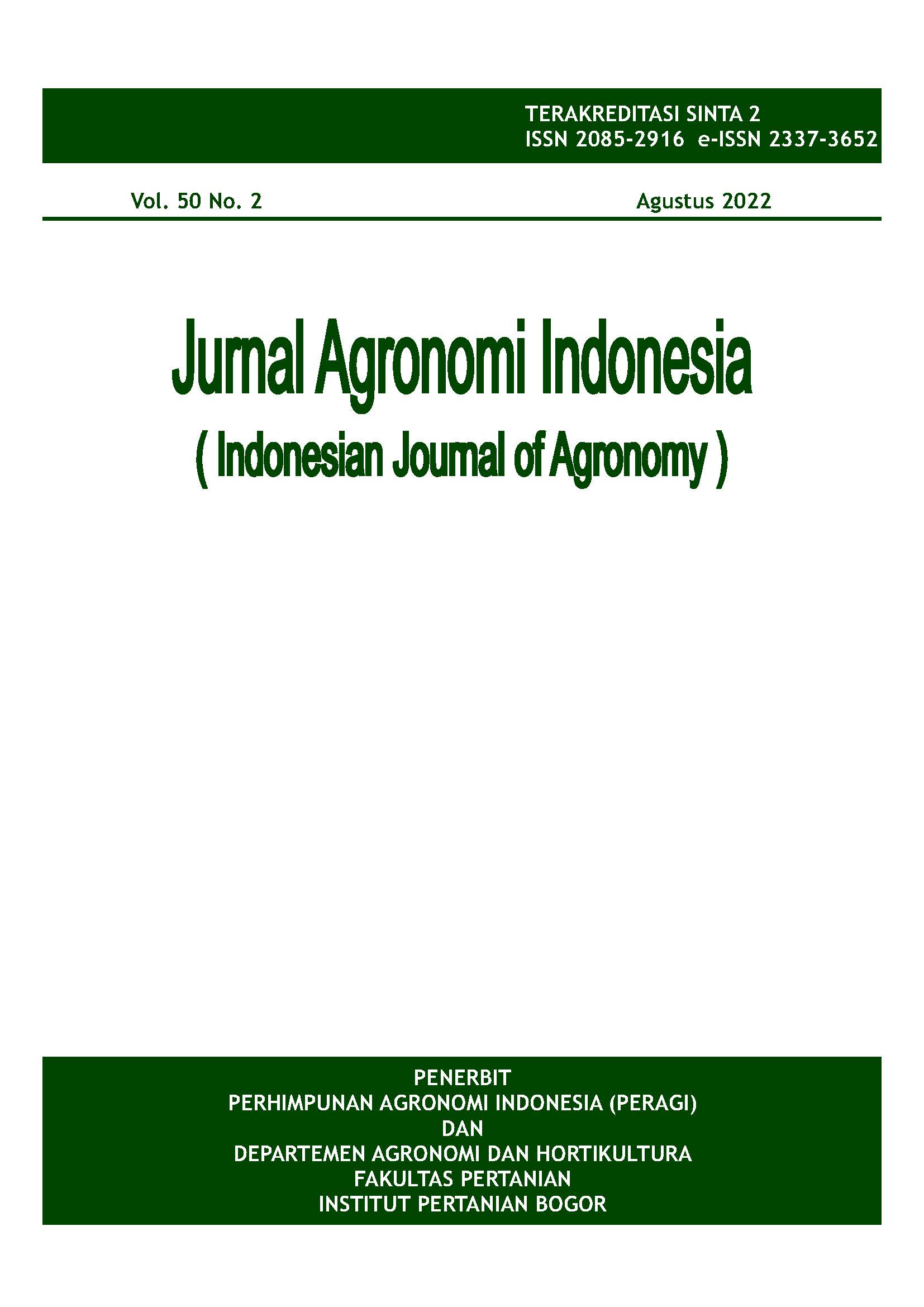Morphological, Physiological and Molecular Characteristics of Tolerant Sugarcane to Waterlogging Stress
Abstract
Waterlogging stress reduced sugarcane yield by 15-45%. This study aimed to determine the morphological, physiological, and molecular response of sugarcane under waterlogging stress. This research was conducted from October 2021 to January 2022 at the Agrotechnology Departement Laboratory, Faculty of Agriculture, Jember University, East Java. The experiment was arranged using a randomized block factorial design. The first factor was the genotype of sugarcane with 6 levels (Bululawang, PS 862, Cening, PS 881, M3, M4). The second factor was the waterlogging period with 3 levels (30 DAT, 60 DAT, and 90 DAT). The third factor was waterlogging treatment (without waterlogging treatment and with waterlogging treatment). Several growth characteristics such as fresh root weight, stem diameter, plant height, leaf area surface, aerenchyma tissue, total chlorophyll, stomata density, H2O2, and antioxidant gene expression were investigated. The results showed that waterlogging stress had an impact on the formation of aerenchyma tissue, plant height, fresh root weight, leaf area, total chlorophyll, stomata density, hydrogen peroxide, and expression of antioxidant gene. Cening genotype showed the best response in terms of low decreasing percentage to morphological, physiological, and high antioxiant gene expression.
Keywords: antioxidant, flooding, resistance, reactive oxygen species, Cening













